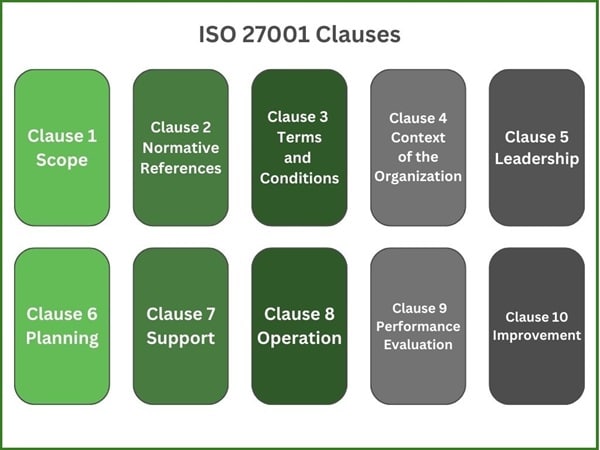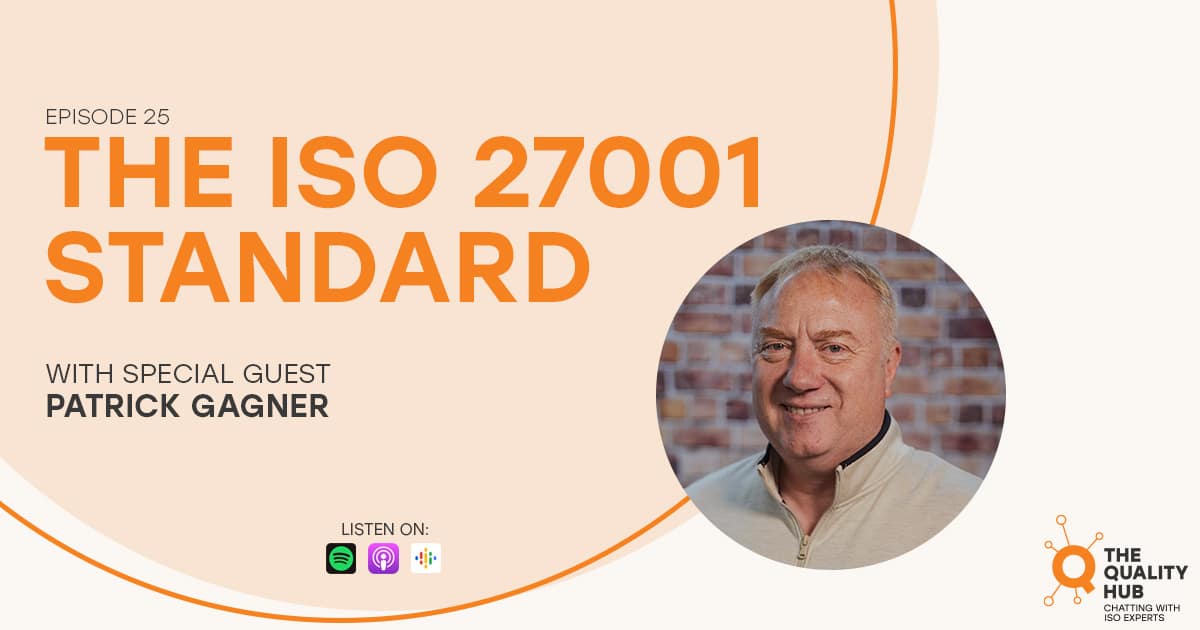ISO 27001 Clause 9 Explained
What is ISO 27001 Certification?
ISO 27001 certification is a globally recognized standard for information security management systems (ISMS). It provides a framework for organizations to systematically manage and protect their sensitive information, ensuring confidentiality, integrity, and availability of data. By adhering to ISO 27001, companies demonstrate that they have established robust security controls to mitigate risks, such as data breaches, cyberattacks, and unauthorized access. The certification is highly sought after, particularly in industries where information security is critical, such as finance, healthcare, and technology.
The process of obtaining ISO 27001 certification involves several steps, starting with a gap analysis to assess the current state of the organization’s information security practices. Following this, the company implements necessary controls and processes to meet the standard’s requirements, which are then audited by an external certification body.
Get a Free Quote
Certification Must be Maintained
Once compliant, the organization is awarded the certification, which must be maintained through regular internal and external audits. The certification not only ensures legal and regulatory compliance but also enhances the organization’s reputation by instilling trust among clients, partners, and stakeholders.
ISO 27001 certification offers significant benefits to businesses by helping them build resilience against security threats, improving operational efficiency, and fostering a culture of continuous improvement in information security. It also opens doors to new business opportunities, as many clients and partners prioritize working with certified organizations to minimize risks associated with data handling. In an increasingly digital world, where data breaches can have catastrophic consequences, ISO 27001 certification acts as a powerful tool for safeguarding sensitive information and maintaining competitive advantage.
What is the ISO 27001 Clause 9 About?
ISO 27001 Clause 9 focuses on performance evaluation of the information security management system (ISMS). It outlines the requirements for monitoring, measuring, analyzing, and evaluating the effectiveness of the ISMS to ensure it is functioning as intended and meeting the organization’s security objectives. The goal of this clause is to ensure continuous improvement and adaptation to any changes in the information security landscape.

Here’s a breakdown of the subclauses in Clause 9:
Clause 9.1: Monitoring, Measurement, Analysis, and Evaluation
Organizations are required to establish processes for monitoring and measuring the performance of the ISMS, ensuring that security objectives are being met.
This involves gathering relevant data, analyzing the results, and evaluating the system’s effectiveness, with a focus on whether the security controls are adequately mitigating identified risks.
Clause 9.2: Internal Audit
Organizations must conduct regular internal audits of the ISMS to verify that it conforms to both the organization’s own policies and the requirements of ISO 27001.
Internal audits are used to identify any non-conformities or areas for improvement, ensuring that the ISMS remains effective and compliant.
Clause 9.3: Management Review
Top management is required to review the ISMS at planned intervals to ensure its continuing suitability, adequacy, and effectiveness.
The management review should consider feedback from monitoring and audits, changes in risks, and opportunities for improvement, ultimately guiding strategic decision-making for information security.
Overall, Clause 9 emphasizes the importance of continuous monitoring and auditing of the ISMS to ensure its effectiveness, driving ongoing improvement and responsiveness to emerging security threats.
What’s the Difference Between ISO 9001 Clause 9 and ISO 27001 Clause 9?
While both ISO 9001 Clause 9 and ISO 27001 Clause 9 focus on performance evaluation, they differ in scope and application due to the specific objectives of each standard. ISO 9001 is focused on quality management, whereas ISO 27001 is centered around information security management. Here’s a breakdown of the key differences:
ISO 9001 Clause 9 (Quality Management System)
Purpose: The focus is on evaluating the performance of the Quality Management System (QMS) to ensure that the organization is consistently delivering products and services that meet customer and regulatory requirements.
Key Areas:
9.1: Monitoring, Measurement, Analysis, and Evaluation of product quality, customer satisfaction, and overall performance of the QMS.
9.2: Internal Audits to assess the effectiveness of the QMS in meeting quality objectives and identifying areas for improvement.
9.3: Management Review to evaluate the QMS performance, customer feedback, process effectiveness, and opportunities for continuous improvement.
Focus: Customer satisfaction, process efficiency, product or service quality, and continual improvement.
ISO 27001 Clause 9 (Information Security Management System)
Purpose: The focus is on evaluating the performance of the Information Security Management System (ISMS) to ensure that information security risks are effectively managed and mitigated and that the system continues to protect sensitive data.
Key Areas:
9.1: Monitoring, Measurement, Analysis, and Evaluation of information security controls, risk management effectiveness, and overall ISMS performance.
9.2: Internal Audits to assess the ISMS compliance with ISO 27001 standards and the organization’s own security policies.
9.3: Management Review to evaluate ISMS performance, changes in risk landscape, incidents, and opportunities for improvement.
Focus: Information security, risk management, protection of data, and resilience against security threats.
Key Differences:
Objective: ISO 9001 Clause 9 focuses on ensuring product or service quality and customer satisfaction, whereas ISO 27001 Clause 9 focuses on safeguarding information and managing security risks.
Scope: ISO 9001 deals with broader organizational processes related to quality management, while ISO 27001 is specifically concerned with information security processes.
Performance Metrics: ISO 9001 evaluates quality performance, such as product defects, customer complaints, and efficiency. ISO 27001 evaluates security performance, such as incident response, risk mitigation, and effectiveness of security controls.
In summary, ISO 9001 Clause 9 is about maintaining and improving quality in delivering goods or services, while ISO 27001 Clause 9 is about maintaining and improving the security of information and mitigating associated risks.

How Much Time Does it take to get ISO 27001 Certification?
ISO 27001 certification takes 4 to 6 months to complete. If you are implementing multiple standards at the same time, it could take longer.
How Much Does it Cost to get ISO 27001 Certification?
Depending on the size and complexity of your company, it can cost between $18,000 and $23,000 to prepare for ISO 27001 certification.
Helpful Resources: The ISO 27001 Standard Podcast
In this episode of “The Quality Hub” podcast, host Xavier Francis interviews Patrick Gagner, a Cyber Consultant at Core Business Solutions, about the ISO 27001 and Information Security Management System. Pat explains ISO 27001 as an Information Security Management System (ISMS), emphasizing its risk-based approach to safeguarding information confidentiality, integrity, and availability. Listen Now
What is Annex A?
With ISO 27001 certification, Annex A plays a critical role as it provides a comprehensive list of information security controls that organizations can use to mitigate risks identified in their Information Security Management System (ISMS).

These controls are categorized into 14 domains, covering various aspects of information security such as access control, encryption, physical security, and incident management. Annex A helps organizations identify the specific controls they need to implement based on their unique risks and business environment, ensuring that the ISMS is tailored to address relevant security challenges.
It’s important to note that Annex A is not a checklist of mandatory requirements but rather a catalog of controls that organizations can choose from as appropriate to their specific needs. During the risk assessment process, an organization identifies its security risks and then selects controls from Annex A (or alternative controls) to mitigate those risks.
Annex A essentially serves as a reference to ensure that the organization has considered a wide range of security areas, providing a structured way to safeguard the confidentiality, integrity, and availability of information.
The use of Annex A demonstrates a proactive and structured approach to information security within the organization’s ISO 27001 framework.
Customer Reviews


